As a child, my parents regularly came up with fun activities to do on a given Sunday, seemingly at the drop of a hat. It only made sense to me, therefore, to carry on in this grand tradition when deciding to do a blog on travel for disabled persons. Sadly, the lessons learned from 20 years of being a wheelchair user were tossed out the window at the exact moment I made this choice. After all, I have lived in Cape Town for 25 years. How difficult could it be, right? Okay, so I would be using public transport. It’s not like I haven’t done that a thousand times before. Well, if there was ever evidence for Creationism, it revealed itself on the day I decided to take a trip up Table Mountain. There is a God, and he was laughing His ass off at my brilliant ideas. The good news is that this piece will be as much about the do’s and don’ts of disabled travel as it will be a chronicle of the excursion itself, and there are a fair few don’ts along with the do’s. Planning, it turned out, is not only recommended – it is essential!
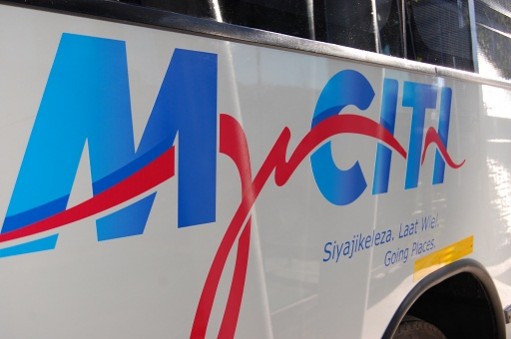 My intention, originally, was to try and put myself in the position of a quadriplegic tourist, visiting Cape Town for the first time, and seeing the sites that were featured in the travel brochure he/she would have received from his/her travel agent. Since 2012, Table Mountain has ranked as one of the Seven New Natural Wonders of the World. Naturally (excuse the pun) I saw it as the logical first place to go. I had visited this attraction before, and recalled having had some great experiences while being there. I made a few calls, packed my camera, and at 9 AM I set off along with my ever intrepid assistant to catch a MyCiti bus.
My intention, originally, was to try and put myself in the position of a quadriplegic tourist, visiting Cape Town for the first time, and seeing the sites that were featured in the travel brochure he/she would have received from his/her travel agent. Since 2012, Table Mountain has ranked as one of the Seven New Natural Wonders of the World. Naturally (excuse the pun) I saw it as the logical first place to go. I had visited this attraction before, and recalled having had some great experiences while being there. I made a few calls, packed my camera, and at 9 AM I set off along with my ever intrepid assistant to catch a MyCiti bus.
The MyCiTi bus network was originally conceived to serve as a mode of public transport for the 2010 FIFA World Cup in Cape Town. It was the first large-scale public transport initiative in Cape Town up to that point to attempt to be universally accessible. As their website states:
MyCiTi is designed to ensure that all special needs passengers can use the service. This includes the disabled, the elderly, young children, pregnant women, passengers travelling alone at night, and passengers with luggage including suitcases, surfboards, prams and bicycles (subject to the limits described in the baggage allowances section).
MyCiTi’s universal access facilities include tactile paving to help the visually impaired locate stations and platforms; induction loops at ticket kiosks for the hearing impaired; CCTV cameras, which are monitored by a control centre, on buses and at stations; and tactile signage and maps. There are also boarding bridges on buses serving residential and central city routes, which provide passengers with level access onto the buses from bus stops.
Of course, attempting to do something or stating it as done on one’s website isn’t always 100% accurate in practice.
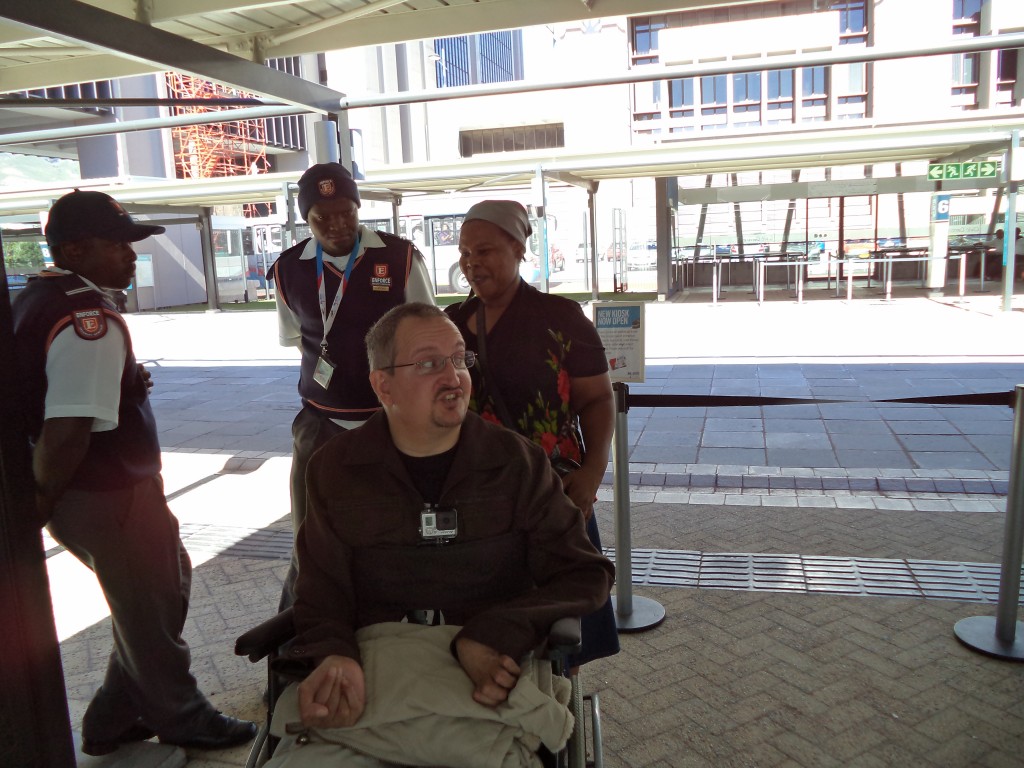 Reaching the top of Kloof Nek, the closest bus stop on your way to the Table Mountain cableway, takes two separate bus trips. On the day in question, I caught my connection into the center of Cape Town without too much of a fuss. However, there are a few things to consider when using a MyCiti bus as a wheelchair user. These buses run on a strict schedule which the drivers are almost anal in adhering to. This is a huge plus for an able bodied passenger, but could prove a little nerve wracking for someone like me, a quadriplegic.
Reaching the top of Kloof Nek, the closest bus stop on your way to the Table Mountain cableway, takes two separate bus trips. On the day in question, I caught my connection into the center of Cape Town without too much of a fuss. However, there are a few things to consider when using a MyCiti bus as a wheelchair user. These buses run on a strict schedule which the drivers are almost anal in adhering to. This is a huge plus for an able bodied passenger, but could prove a little nerve wracking for someone like me, a quadriplegic.
- Tip #1: Speak up, and be assertive! There are allocated wheelchair areas on board, complete with safety belts. What sometimes happens is that the driver gets a cue from the platform that it is clear, and he/she usually takes this as an indicator for him/her to get going. They don’t, however, always consider whether or not a passenger in a wheelchair is secured. What I do is to enlist the attendant on the platform to make the driver aware of the fact that I’m securing my chair, and informing him/her when I’m done. A disabled passenger has a right to feel safe on public transport.
- Tip #2: Be sensible! Don’t try to get onto an already crowded bus. It causes all sorts of problems, one of which being that the driver can’t actually see you in his/her rear view mirror. Another obvious problem you should be mindful of (you’d think this would be obvious…) is that you endanger not only yourself, but also other standing passengers. A wheelchair is made of metal and will win over an unsuspecting shin every time.
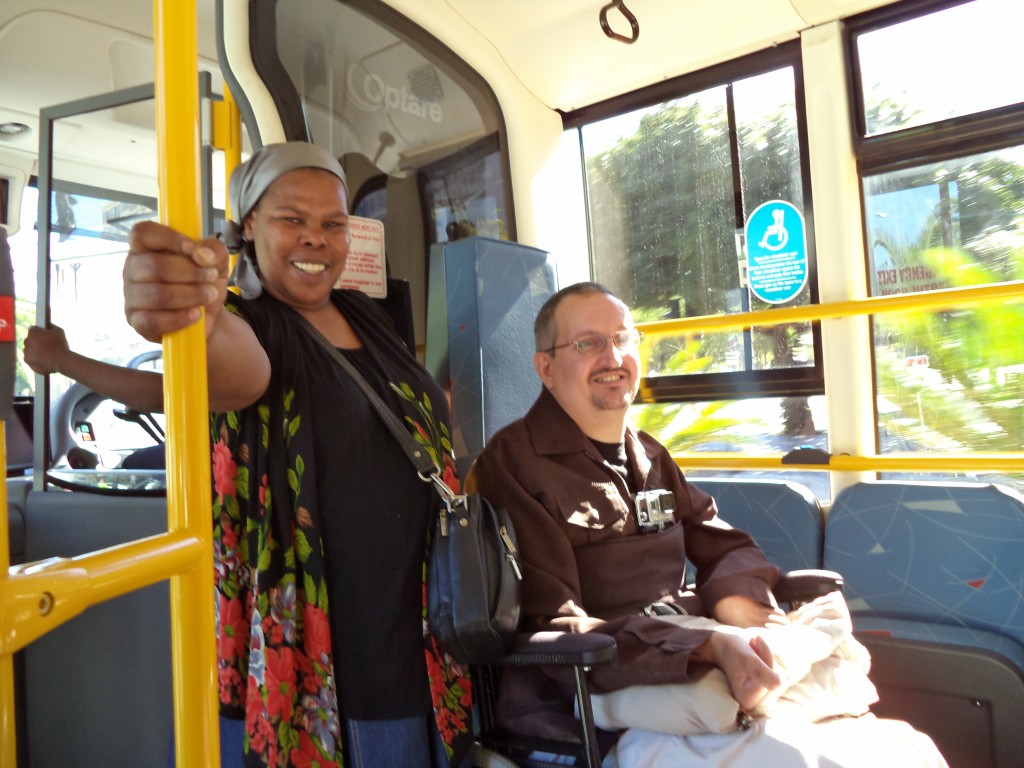 Upon reaching the Civic Centre terminal, I exited the bus and headed for an information kiosk. Over the past year, many new routes have opened up across the Cape Peninsula and beyond. As someone who has actually caught an incorrect connection (don’t laugh…), I have learned that your best option is to confirm the platform when catching another connection to your eventual destination. The MyCiti staff are very friendly and are always eager to help. I was sent on my way in next to no time. Hi-ho Silver! Cableway, here I come.
Upon reaching the Civic Centre terminal, I exited the bus and headed for an information kiosk. Over the past year, many new routes have opened up across the Cape Peninsula and beyond. As someone who has actually caught an incorrect connection (don’t laugh…), I have learned that your best option is to confirm the platform when catching another connection to your eventual destination. The MyCiti staff are very friendly and are always eager to help. I was sent on my way in next to no time. Hi-ho Silver! Cableway, here I come.
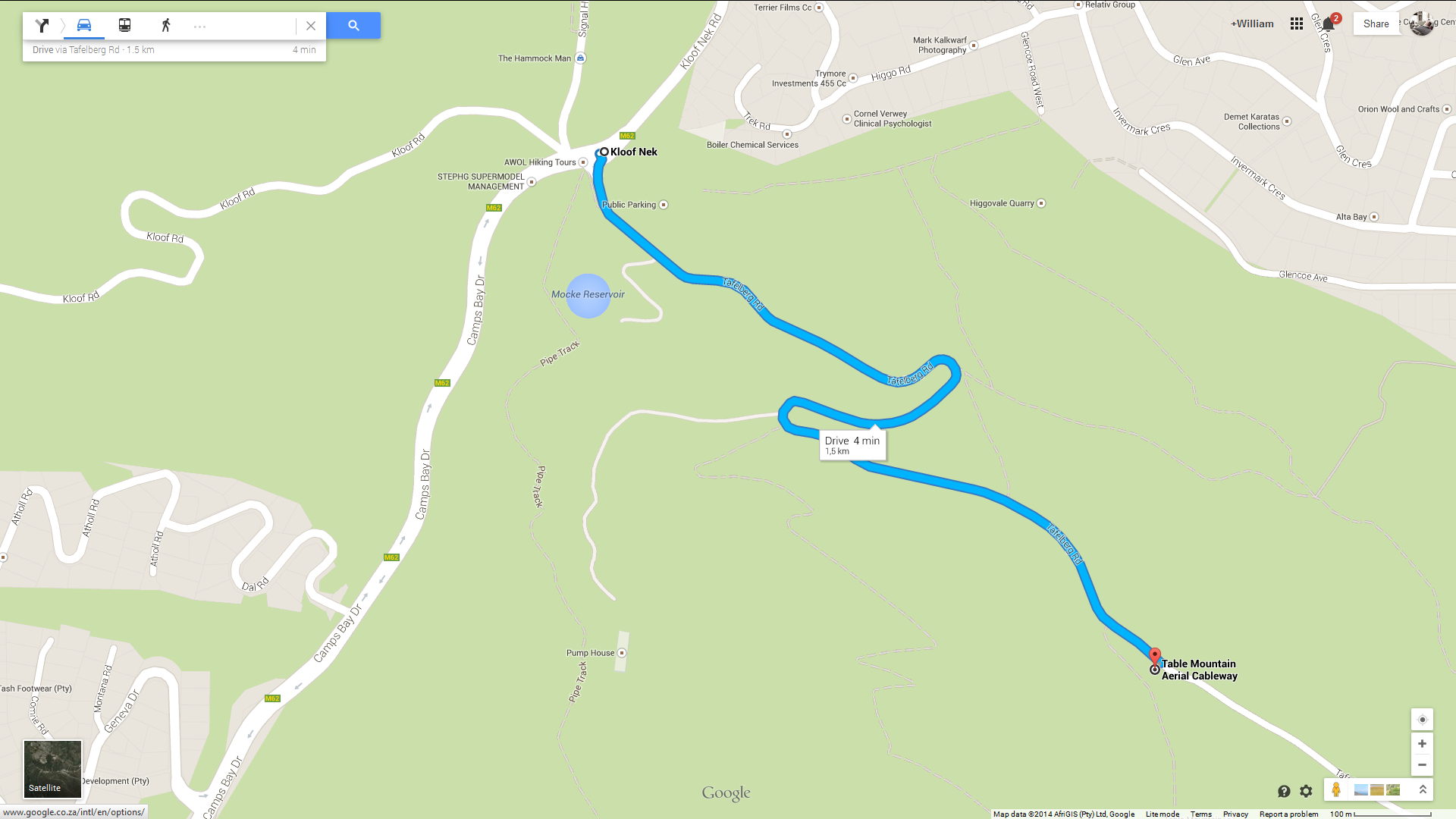 My second connection was on a smaller version of MyCiTi bus. Along feeder routes, as opposed to arterial routes such as the one I’d taken to get to this point, these are commonplace. They are rated to carry twenty five seated- and twenty five standing- passengers. They are wheelchair friendly, and perhaps most importantly, they allow the wheelchair user to embark/disembark at street level. As it turns out, however, not all of these buses are equipped with ramps. The one I caught didn’t have one and, while the driver was eager to help, it wouldn’t have been practical had I not been in my push chair.
My second connection was on a smaller version of MyCiTi bus. Along feeder routes, as opposed to arterial routes such as the one I’d taken to get to this point, these are commonplace. They are rated to carry twenty five seated- and twenty five standing- passengers. They are wheelchair friendly, and perhaps most importantly, they allow the wheelchair user to embark/disembark at street level. As it turns out, however, not all of these buses are equipped with ramps. The one I caught didn’t have one and, while the driver was eager to help, it wouldn’t have been practical had I not been in my push chair.
- Tip #3: Always check for ramps on smaller buses as curbs are not always high enough. The trip through the streets of the Mother City is a sightseeing opportunity like no other. It’s no mistake that the New York Times listed it as the number one place to see before you die. My advice to anyone going somewhere on a MyCiTi bus is to take careful note of all the interesting places you pass along the way, as well as which bus stops they’re close to. It’s all about exploring, after all! That way, you can come back to these places again later.
Okay, so back to my own adventure. I arrived at the top of Kloof Nek and suddenly felt just a little ill. No, there wasn’t anything wrong with me physically, but looking at the incline of the road to the Cableway, I realised that Google Maps does NOT tell one the whole story. A leisurely fifteen minute walk, this most definitely isn’t. Combine that with the fact that there is the most insane traffic and you quickly discover that “walking” up here is a pretty bad idea.. I threw in the towel after about 400 metres…
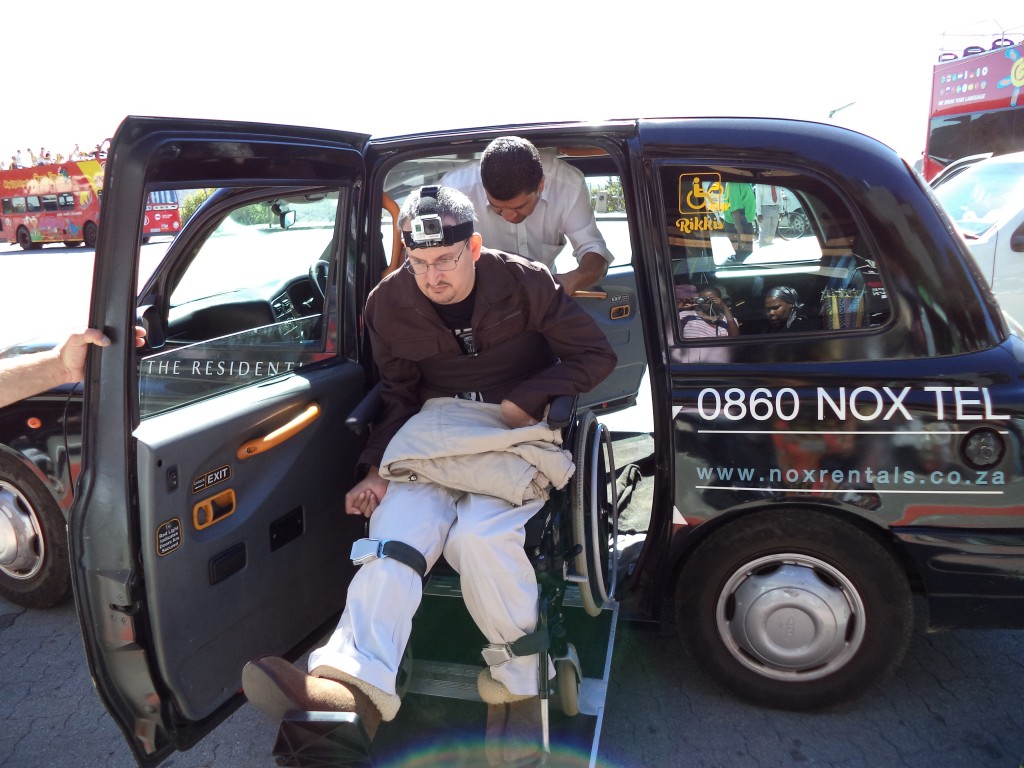 Now, remember when I said that planning this outing was essential? This is where one learns that lesson. Getting a wheelchair accessible taxi in Cape Town is limited to a handful of operators. I chose to call one I’d had good dealings with in the past, Rikkis Taxis. What makes them unique is that they use original London-style cabs which are 100% wheelchair accessible. However, they were relatively expensive at R50 for the 1.5 km trip, one way. Since I’m getting around with a broken leg at the moment (didn’t I mention that?…), they were my only option. Also, because there are a finite number of these around, the time it took from my call to the actual pick up was roughly 30 minutes. But all’s well that ends well, and we eventually arrived at our destination.
Now, remember when I said that planning this outing was essential? This is where one learns that lesson. Getting a wheelchair accessible taxi in Cape Town is limited to a handful of operators. I chose to call one I’d had good dealings with in the past, Rikkis Taxis. What makes them unique is that they use original London-style cabs which are 100% wheelchair accessible. However, they were relatively expensive at R50 for the 1.5 km trip, one way. Since I’m getting around with a broken leg at the moment (didn’t I mention that?…), they were my only option. Also, because there are a finite number of these around, the time it took from my call to the actual pick up was roughly 30 minutes. But all’s well that ends well, and we eventually arrived at our destination.
One of the great things about Cape Town’s many tourist attractions is the vibrant array of impromptu street performers one gets to encounter around them. Table Mountain is no exception. I met up with a guy who referred to himself as “Ixilongo”, in reference to the unique instrument he was playing. It can only be described as an Africanised version of a Digiridoo (sic). I gave this busker a lift with me in the cab I took and, in return, he played a few tunes for me.
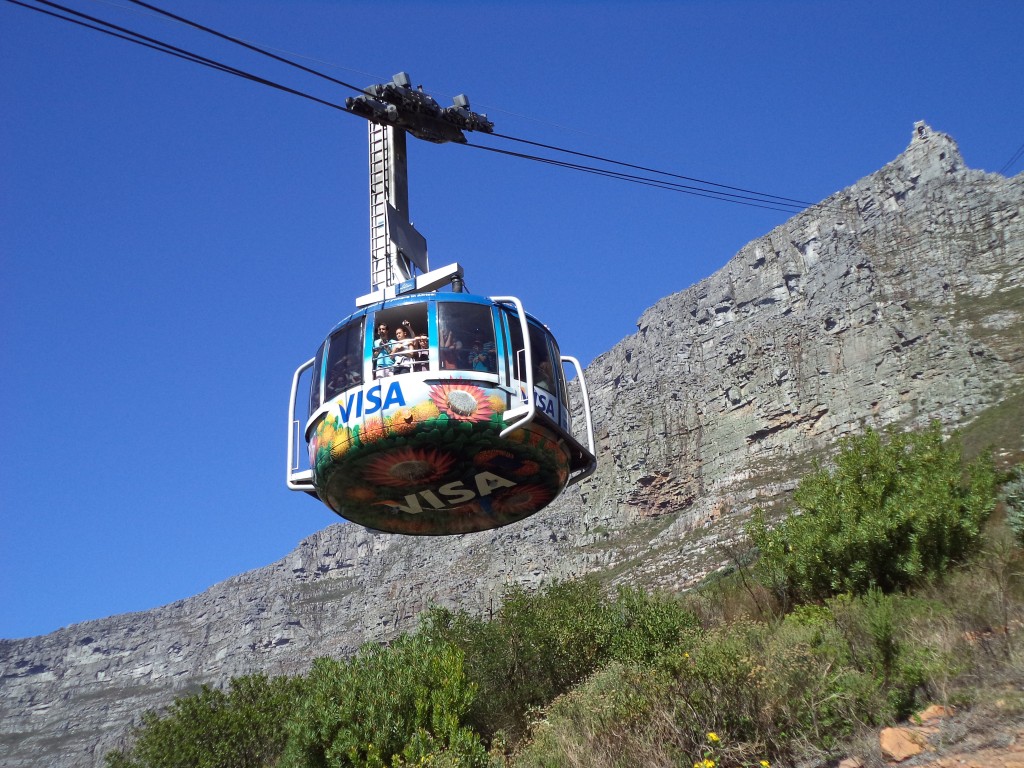 There’s a reason why Table Mountain was voted a New Natural Wonder of the World. Wow! Even though I’ve been up there a few times, I never lose my sense of awe of this landmark, up close. I can only agree that it’s somewhere everyone should try to get to at least once in their lifetimes. Of course, with Table Mountain’s newly found fame, the prices have gone up accordingly. There was a time when someone with a disability would have received free entry up the Cableway. Sadly, not anymore. If you’re going with an assistant, as I did, you end up paying for two persons. I could have a rant about how my assistant is there to assist me, the quadriplegic, and how insisting on me paying for two, amounts to exploitation… blah blah blah. For the sake of this blog actually reaching its conclusion, I’m going to restrain myself. I was definitely less than impressed. So, moving right along, I paid the R215 per person (approximately US$20), and was ushered up an elevator to wait my turn for a gondola.
There’s a reason why Table Mountain was voted a New Natural Wonder of the World. Wow! Even though I’ve been up there a few times, I never lose my sense of awe of this landmark, up close. I can only agree that it’s somewhere everyone should try to get to at least once in their lifetimes. Of course, with Table Mountain’s newly found fame, the prices have gone up accordingly. There was a time when someone with a disability would have received free entry up the Cableway. Sadly, not anymore. If you’re going with an assistant, as I did, you end up paying for two persons. I could have a rant about how my assistant is there to assist me, the quadriplegic, and how insisting on me paying for two, amounts to exploitation… blah blah blah. For the sake of this blog actually reaching its conclusion, I’m going to restrain myself. I was definitely less than impressed. So, moving right along, I paid the R215 per person (approximately US$20), and was ushered up an elevator to wait my turn for a gondola.
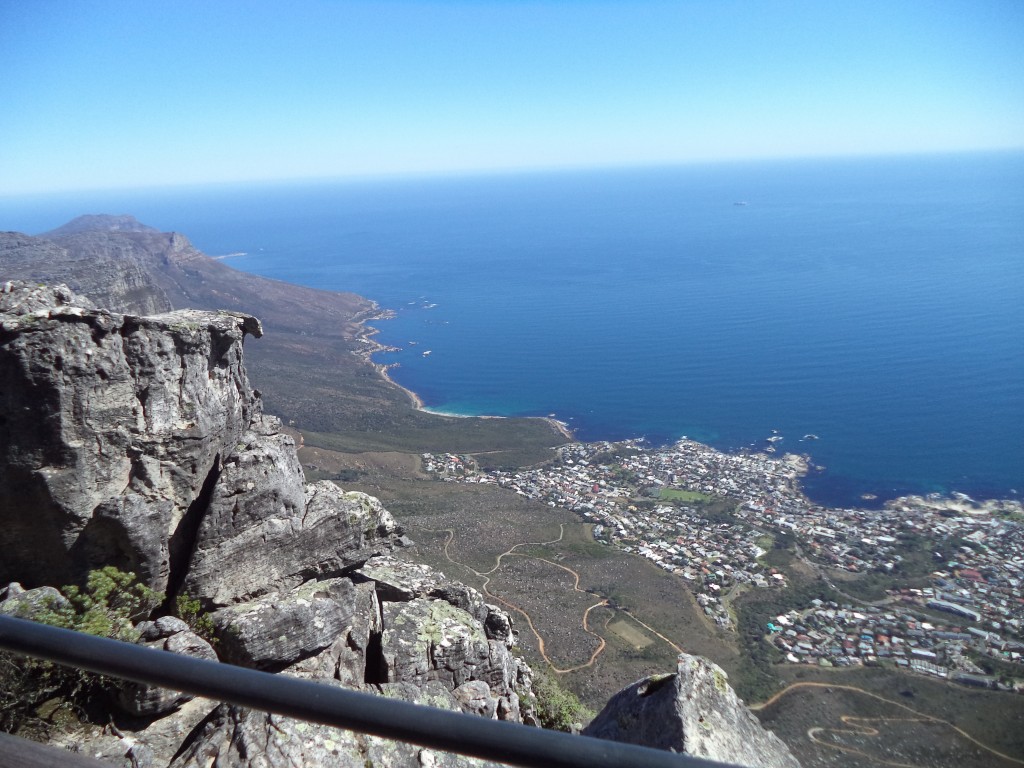 The trip up the mountain was definitely one of the highlights of my visit to Table Mountain. However, I need to point out that as someone who is seated, I had to push and shove to get to a place where I could see out of the window. Generally, I would respect other people’s personal space but, in this instance, I made an exception. One would think that able-bodied people would afford a wheelchair user the courtesy of moving aside. As I discovered, courtesy was in short supply. I would refer you back to Tip #1 at this point. I think that, had the person in charge of ushering in passengers onto the gondola been sensitive to my predicament, he might have considered allowing me on to it first? I think I might be giving the folks at the cableway a phone call at some point. Other than this, I had an incredible experience. The floor inside the gondola rotates 360 degrees on your way up, so every passenger gets the panoramic experience from start to finish.
The trip up the mountain was definitely one of the highlights of my visit to Table Mountain. However, I need to point out that as someone who is seated, I had to push and shove to get to a place where I could see out of the window. Generally, I would respect other people’s personal space but, in this instance, I made an exception. One would think that able-bodied people would afford a wheelchair user the courtesy of moving aside. As I discovered, courtesy was in short supply. I would refer you back to Tip #1 at this point. I think that, had the person in charge of ushering in passengers onto the gondola been sensitive to my predicament, he might have considered allowing me on to it first? I think I might be giving the folks at the cableway a phone call at some point. Other than this, I had an incredible experience. The floor inside the gondola rotates 360 degrees on your way up, so every passenger gets the panoramic experience from start to finish.
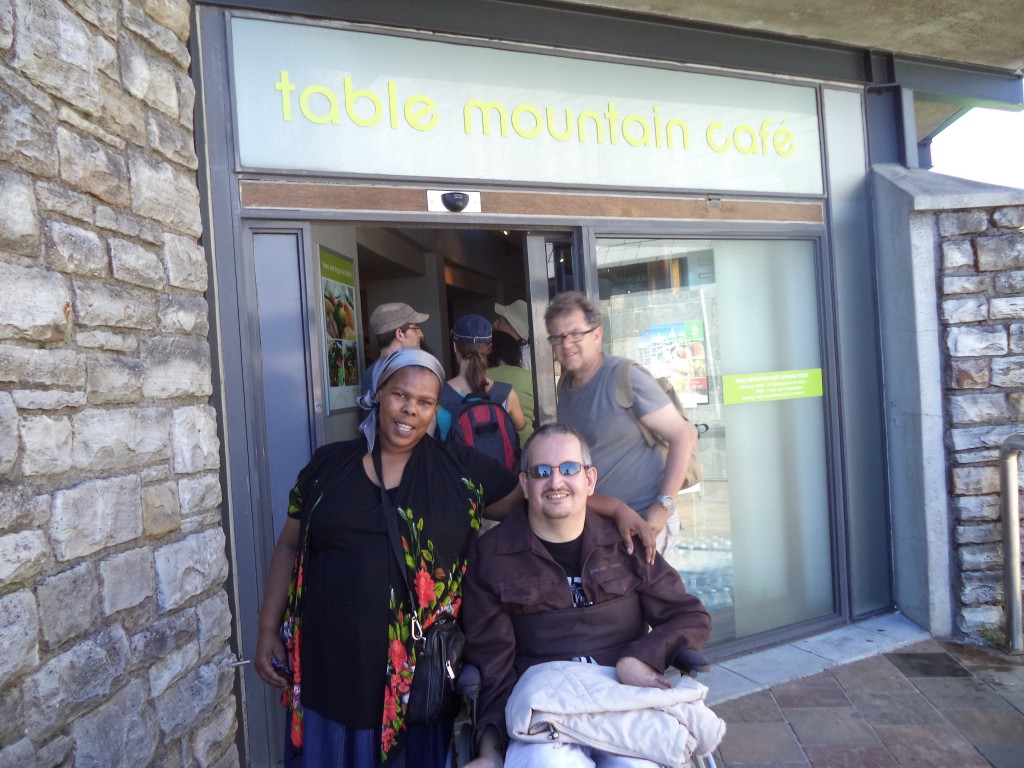 Upon disembarking, it’s a short stroll past the souvenir shop and you’re there. The moment you realise that you are on top of Table Mountain, 1067 m above sea level, is something to savour. For most visitors, I would imagine that it is most likely a bucket list event. As for me, it never ceases to take my breath away. On the day of my trip, the weather was about as good as it gets and, looking off into the distance, I could see Cape Point, a place I know to be more than 60 km away. Moving around from vantage point to vantage point, there was one thing that quickly became very apparent. The cobblestone surface over which I was roaming was what one would expect on top of a mountain, if one had given it any thought, that is. I always wanted to be a milkshake, so I was definitely in the right place. I am definitely one of those people for whom the glass is always half full, and I was taking it all in, along with snippets of at least a dozen foreign languages. I was feeling so proud to be a South African! After I had done about all the photo opportunities that I had wanted to, it was time for lunch. This part of my visit was a first for me as I hadn’t eaten at the restaurant since it had been renovated.
Upon disembarking, it’s a short stroll past the souvenir shop and you’re there. The moment you realise that you are on top of Table Mountain, 1067 m above sea level, is something to savour. For most visitors, I would imagine that it is most likely a bucket list event. As for me, it never ceases to take my breath away. On the day of my trip, the weather was about as good as it gets and, looking off into the distance, I could see Cape Point, a place I know to be more than 60 km away. Moving around from vantage point to vantage point, there was one thing that quickly became very apparent. The cobblestone surface over which I was roaming was what one would expect on top of a mountain, if one had given it any thought, that is. I always wanted to be a milkshake, so I was definitely in the right place. I am definitely one of those people for whom the glass is always half full, and I was taking it all in, along with snippets of at least a dozen foreign languages. I was feeling so proud to be a South African! After I had done about all the photo opportunities that I had wanted to, it was time for lunch. This part of my visit was a first for me as I hadn’t eaten at the restaurant since it had been renovated.
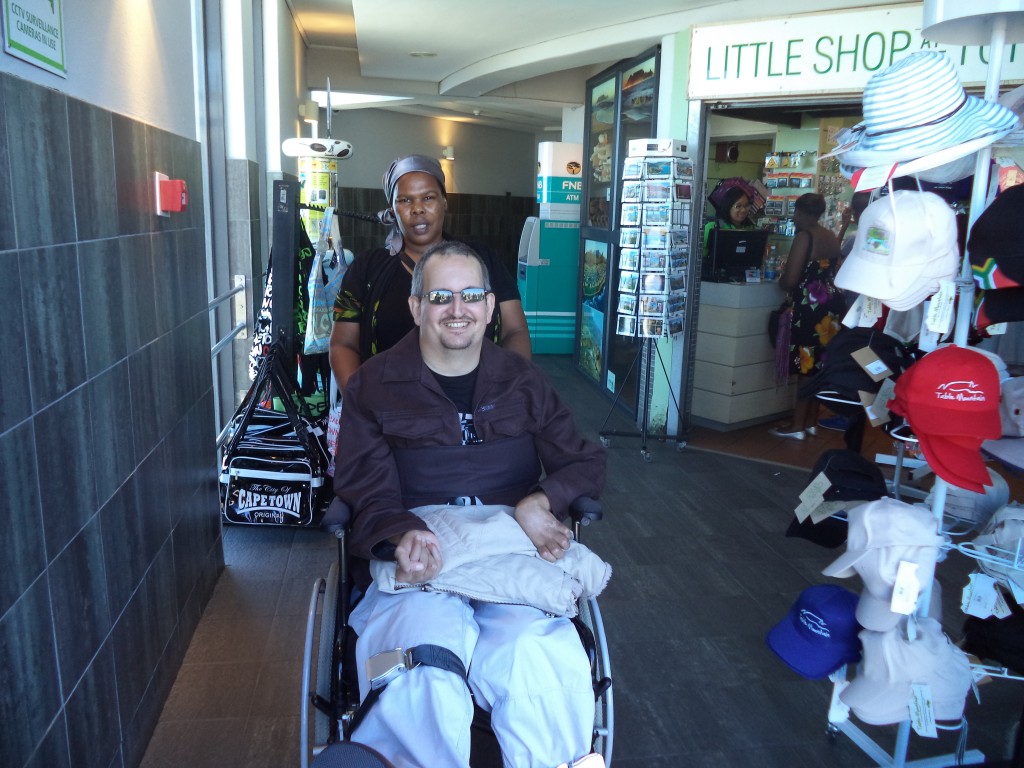 Arriving at the door, there was a bit of a queue, but nothing to be too alarmed about. At least, that’s what I thought. There were a few menus posted around the entrance, and everything seemed quite reasonably priced. I think it’s important to point out that, as a local, one operates in Rands, not in US dollars, Pounds Sterling, or Euros. I didn’t really want to spend more than about R180 on lunch for two. That would include two a la carte meals and a couple of drinks. Once inside, the picture changed quite dramatically. The entrance area to this restaurant was absolutely packed to the rafters. On offer was a buffet style set up, where you were invited to dish up a plate of food for yourself, and told that you would be paying by weight. I never did figure out where one went to find drinks, but by the time I had reached the till, I had lost my appetite somewhat. Clearly, a lot had changed as far as the extent to which operators at this landmark cater for people who actually live in Cape Town, pay taxes, and call themselves South African citizens. My own plate of food, comparable to a steak you would order at your local Spur, by volume, came to in excess of R110. This, however, wasn’t steak. It was chicken curry, and while it was pretty good, the experience left a bitter taste in my mouth. Admittedly, I may simply not have kept up with the cost of living in my city, but I am always saddened when I think that the vast majority of people like me will probably never see this amazing part of their heritage, simply because the powers that be decided it best to cater purely for the wealthy and for foreign tourists.
Arriving at the door, there was a bit of a queue, but nothing to be too alarmed about. At least, that’s what I thought. There were a few menus posted around the entrance, and everything seemed quite reasonably priced. I think it’s important to point out that, as a local, one operates in Rands, not in US dollars, Pounds Sterling, or Euros. I didn’t really want to spend more than about R180 on lunch for two. That would include two a la carte meals and a couple of drinks. Once inside, the picture changed quite dramatically. The entrance area to this restaurant was absolutely packed to the rafters. On offer was a buffet style set up, where you were invited to dish up a plate of food for yourself, and told that you would be paying by weight. I never did figure out where one went to find drinks, but by the time I had reached the till, I had lost my appetite somewhat. Clearly, a lot had changed as far as the extent to which operators at this landmark cater for people who actually live in Cape Town, pay taxes, and call themselves South African citizens. My own plate of food, comparable to a steak you would order at your local Spur, by volume, came to in excess of R110. This, however, wasn’t steak. It was chicken curry, and while it was pretty good, the experience left a bitter taste in my mouth. Admittedly, I may simply not have kept up with the cost of living in my city, but I am always saddened when I think that the vast majority of people like me will probably never see this amazing part of their heritage, simply because the powers that be decided it best to cater purely for the wealthy and for foreign tourists.
Eventually, it was time to start heading home. I descended the cableway, and once I had taken the elevator down to ground level, I again called for a Rikkis taxi. Once again, a friendly voice picked up and announced herself. I was informed that it would be a 15 min wait, and I would be on my way. An hour later, after having made three phone calls, I was finally picked up and dropped off at the Kloof Nek MyCiTi bus stop. Again, the fare came to R50, which brought my tally to an even R100 for the 3 km return route. I recently sent a questionnaire to the General Manager of Rikkis taxis, Mr Ayub Baker, which included a questionnaire:
Question: Compared to able-bodied commuters, wheelchair users pay a premium to use services such as the one you provide. Do you plan to address this issue, and if so, how?
Answer: That was the case beforehand but we have standerdised our prices, regardless whether you are able bodied or a wheelchair user. Thus, there should be no difference in price for a wheelchair user using a Rikkis London cab.
While Mr Baker’s answer is, in fact, accurate with regards to his own business, he may have misunderstood my question. I was referring to the cost I would incur when using a wheelchair accessible vehicle, compared to one which is not. As a wheelchair user, I feel it a little excessive to pay R33 per kilometre where an able-bodied person would pay around R10 per kilometre. I must say, though, that I have had better experiences with them in the past when I’d booked a cab in advance for a given time, within a given timeframe, over a further distance. Those worked out at around R19 per kilometre, with little to no delays. However, I have used wheelchair accessible vehicles on demand overseas which have run like clockwork and have actually cost less when converting currencies back to Rands.
- Tip #4: Arrange a wheelchair accessible taxi ahead of time when making use of one in Cape Town, and make sure to alert the operator of your schedule.
As I’m sure you can imagine, it was quite late already by the time I caught my connecting buses back home. It certainly didn’t help that it was the middle of rush-hour. After three jam-packed buses, spread 20 min apart, I finally managed to catch one. All in all, I was one extremely tired disabled traveler. I can only imagine how my intrepid assistant must have been feeling. To Ms Nomthetho Khunyuza I have to say a special thank you. There are times when I lead a hectic life, and even though she is my employee, she often goes above and beyond the call of duty. Of course, she has no idea how much this means to me. She does it because that is who she is. One in a million!
